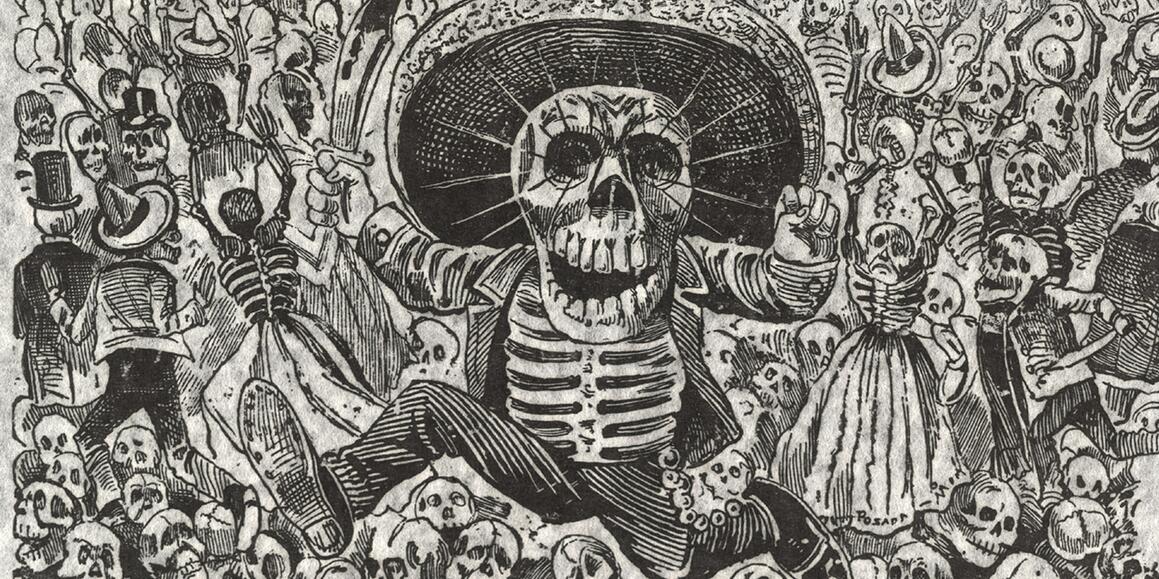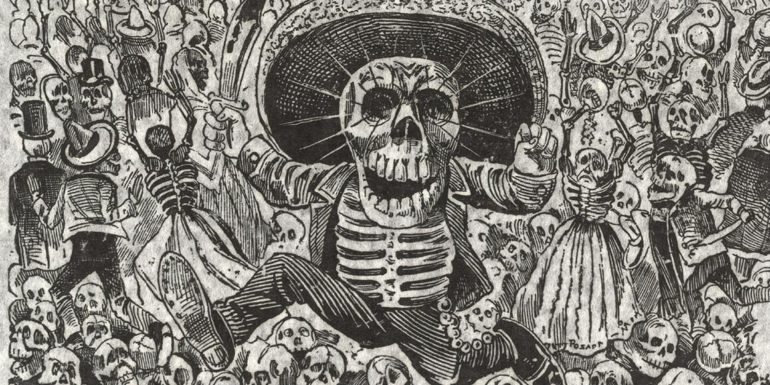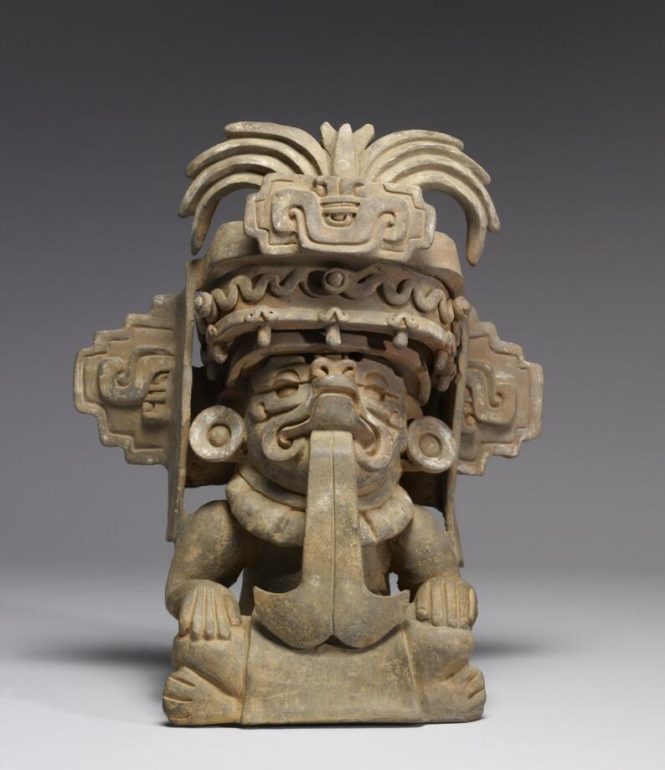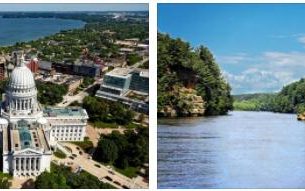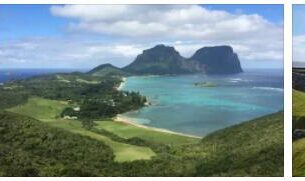Mexico is very rich in ancient finds. Different groups of people created their distinctive style. In the following, developments in the art of the folk groups will be illuminated in chronological order.
Archaic style or cultural tradition 1500-100 BCE.
By this designation is meant the oldest preserved results of the artistic ability of the resident population, but the age varies widely. Within Mesoamerica, archaic culture was an advanced stage even before the beginning of our era. In other parts of the country, archaic style lived on until the arrival of the Spaniards.
The most important sites are in the Mexico Valley, in Chupicuaro in the state of Guanajuato and in certain parts of the states of Morelos and Michoacán. Here were skilled potters, who made fine pottery and graceful, imaginative human figures, most women, probably symbols of growth and fertility.
The Olmec tradition 500–100 BCE.
The Olmec tradition suddenly seems to flourish in Tabasco’s highlands. You know nothing about the people, but their art stands at a very high level and includes, among other things, huge stone heads and outstanding jadeite small figures. The faces are generally childish round and have jaguar mouths. After one of the most important sites, this culture is also called the La Venta culture. Many have claimed that the oldest separable styles had their roots here. In all cases, the olmec culture was widespread throughout much of the country. It is believed that the “Olmecs” were in contact with the Mayans further south, having the writing, calendar and the highly developed sculpture in common.
The style differentiation increased to about 200 AD, with the metropolitan city of Teotihuacán as its center, the Teotihuacán culture grew (200–900 AD). The huge buildings were clad with stone and were often richly decorated with reliefs. One of the temple pyramids has facade decoration of huge stone sculptures. Religious murals also adorn profane buildings. In the ceramics, mention should be made of cylindrical vessels with three feet and tapered lid and decor of stylized gods and demons, carved after the burn.
Diego Rivera’s fresco The Revolutionary Leadership Formation (1926–27), 3.5 x 5.5 m. Universidad Autonoma de Chapingo, Chapel.
Zapotek 400 BCE – 1521 AD
The artistic flourishing of the Zapotecs began in 200 AD and culminated in the classic Mexico period of 500-1000 AD, with its center in Monte Albán, near the city of Oaxaca. The art is best known through engravings, usually a cylindrical vessel built with a human or jaguar figure as a display. The figures are ornamental and often fitted with magnificent headdresses and emblems of hieroglyphic character.
In the 15th century, the Zapotecs were expelled from Monte Albán by the mix signs, and they erected a new religious center further east, in Mitla. The magnificent buildings had facades and rooms effectually adorned with stone mosaics in geometric patterns. Mitla was conquered by the Aztecs in 1494.
On the Gulf Coast (200 BCE – 1521 AD), the leading people were the Totonacs, who, among other things, erected the great city of El Tajín with richly decorated buildings. They were also skilled sculptors and created in the pottery the famous “laughing figures”.
Colossal head, 2.46 m high. The Olmecene created such sculptures approx. 200 BCE The head was found in the jungle of an island in the state of Tabasco, and today stands in the La Venta Park of Villa Hermosa.
Huastek 300 BCE – 1521 AD
The Huasteken lived north of the Totonacene, but spoke a Mayan language. Few objects from their oldest culture have been preserved, but what exists is a refined sense of form.
Toltek 900–1450
The interpreters can be described as the heirs of the Teotihuacán culture. The headquarters were Tula in the state of Hidalgo. They sculpted the so-called Chac-Mool figure. Originally, the interpreters were a chichimec tribe. Around 1160, they were overtaken by another chichimec group from the north and forced to leave Tula. They went south, and some of the people settled in the northern part of Yucatán, where they eventually took over Chichén Itzá.
Gravure from the zapotek culture dated between 300-600 AD
Maya 300–1450
Maya appears in Northern Guatemala and neighboring parts of Mexico and Honduras. This has been called the “ancient kingdom” of the Mayan people. The classical period lasts for about 900. The Mayans had a hieroglyphic script, accurate timekeeping and advanced astronomy. The buildings were often provided with sculptural facades. The figure sculpture was characteristic of the period. Important are the dated stone pillars, the so-called stalks.
The different city states each contributed in their own way to the unity of the Mayan art tradition:
- Copánin Honduras reached the highest in fresh sculpture.
- In Quirigua in southeastern Guatemala you will find sculptural and magnificent frames.
- Piedras Negras in Petén, Northern Guatemala, is famous for its lively stone reliefs.
- Tikal in Petén is famous for its reliefs in wood.
- Palenque in Chiapas, in southern Mexico, has particularly fine stucco reliefs.
Compared to the Central Mexican, more stylized, the Mayan art of the ancient realm has a softer and more realistic free-form depiction and composition. This also applies to the mural and ceramic painting, which reached the highest in the “old kingdom”, and the later book illustration.
From the 8th century, the earth was so depleted and over-taxed in the vulnerable tropical area that the Mayans found it most sensible to move north in Yucatán, where they created their “new kingdom”. Here the art went partly new ways. The sculpture was placed more in the service of architecture and appears in geometric-ornamental form, especially in the lavishly equipped display facades. New elements came with the interpreters, who took possession of Chichén Itzá. In the mid-1400s, the Mayan Alliance was split by ordinary civil war.
Within the Mixtek-Puebla culture, the foremost people were the mix characters, who had received strong impetus from the interpreters. The blacksmiths became the country’s foremost goldsmiths, they were also skilled potters, especially known for their polychrome clay vessels, as they are masters of most of what is preserved by pre-Columbian wood and mosaic works. The Mixed Characters attacked the Zapotecs, but by the time they had fully won, the Aztec armies came and incorporated both peoples into their empire at the end of the 15th century.
The Atlantic in Tula, the interpreter’s capital. The sculptures depict warriors and are 4.60 m high. 800-1100 century.
The Aztec Culture 1324–1521
The Aztecs were the interpreters of the interpreters and took the lead after Tula’s fall. In 1324, they built their city of Tenochtitlán (the present Mexico city) in Lake Texcoco, and from there they gradually settled for a large part of central and southern Mexico. Their art reflects an intricate cult of death. Most sculptures, which often have huge dimensions, are images of gods, portrayed as terrifying demons with a highly expressive expression. There are also human skulls with inlaid mosaics, and rock crystal skulls.
Detail of relief from Palenque, Chiapas
On the other hand, there are also realistic and restrained cheerful everyday representations of animals and humans. The ceramics are stringent and with few variations, but have a nice restrained shape. In 1521, the Aztec capital was leveled with the earth by the Spaniards, and on its ruins the city of Mexico was built. According to the conquerors’ reports, Tenochtitlán was a rare magnificent and well-built metropolis.
Colonial times 1521 – circa 1820
Conquistadors’ conquest of Mexico in the 16th century broke the independent development of the area’s local cultures.
The art of the colonial period was almost exclusively devoted to the churches and gained in church facades and interiors a wealth that is unparalleled in Europe. The skilled Native American carvings especially made altar parties, pulpits and so on with lush sculpture. In some places, walls and ceilings are covered with sculpture, but despite it, it often has an airy, elegant shape. The ecclesiastical painting does not differ from contemporary Spanish, while the portrait art that grew in the 18th century has a greater peculiarity.
Aztek. Statuette representing Xiuhtecuhtli. The Anthropological Museum, Mexico City.
